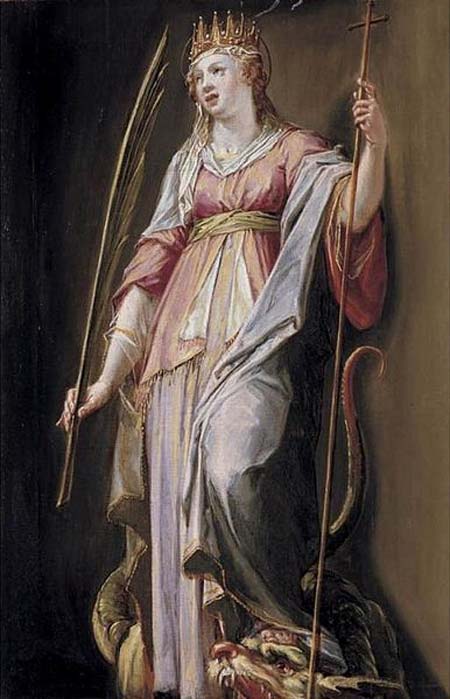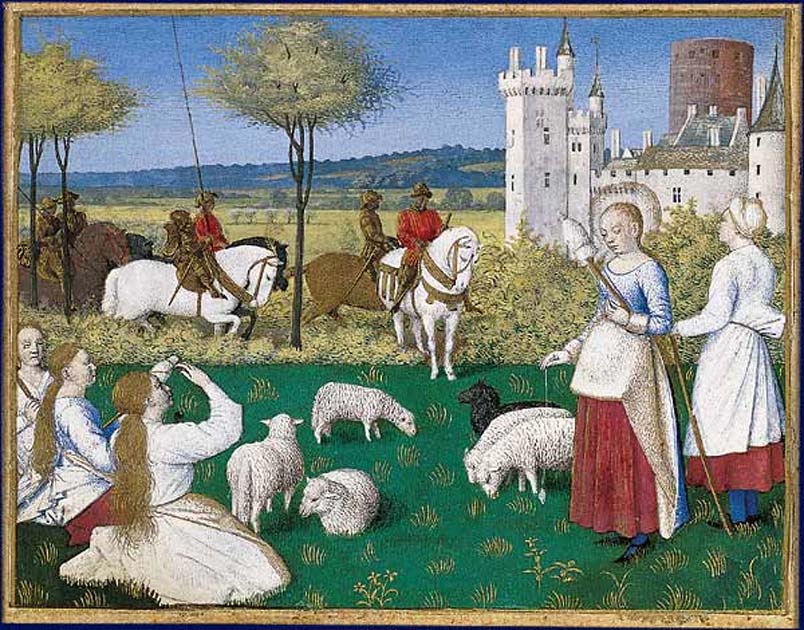She Met the Devil, Escaped a Dragon, and Survived Several Attempts on Her Life: The Remarkable Story of St. Margaret of Antioch
St. Margaret of Antioch is a Christian saint venerated in both the Churches of the West and of the East. In the latter, she is known as Saint Marina the Great Martyr. Little is known for certain about St. Margaret’s life, and she was, at one point of time, even regarded in the West by some to be apocryphal. Nevertheless, she became an immensely popular saint in Western Europe following the Crusades. One of the reasons for this is that she was a patroness of one of the fundamental aspects of life, i.e. childbirth. St. Margaret is also part of a group of saints known as the Fourteen Holy Helpers.

St. Margaret of Antioch by Peter Candid, 16th Century. (Public Domain)
Margaret’s Early Life
A version of St. Margaret of Antioch’s hagiography can be found in Jacobus da Varagine’s (alternatively spelled as Jacobus de Voragine) The Golden Legend, which was compiled during the 13th century. According to this account, St. Margaret is said to have been born in Antioch. It may be pointed out that in the East, it is further specified that the Antioch of St. Margaret is Antioch in Pisidia (in Asia Minor) as opposed to Antioch on the Orontes (in Syria). This distinction has been lost in the West. Da Varagine’s account goes on to state that St. Margaret’s father was a pagan priest by the name of Theodosius and that St. Margaret was given to a nurse to be raised and later became a Christian.
- Saint, Witch or Both? The Strange Case of St Columba of Sens
- The Fascinating Catacomb of Saint Agnes, a Young Christian Martyr Who Died for her Beliefs
- Is St Catherine of Alexandria a Fictional Person Based on Hypatia of Alexandria?
The Start of Margaret’s Troubles
When St. Margaret was 15 years old, her beauty caught the eye of Olybrius, a Roman official of the region (different ranks are given to him by the various accounts). In any event, Olybrius desired to marry the maiden and attempted by persuasion to have her renounce her faith. When St. Margaret refused to do so, she was arrested, thrown into prison, and tortured. It was during her time in prison that “she prayed our Lord that the fiend that had fought with her, he would visibly show him unto her.” As a result, the Devil appeared to St. Margaret in the form of a dragon.

St Margaret and the Dragon by Titian. Prado Museum. (Public Domain)
Da Varagine provides two versions of what happened next. In one of them, the dragon was attacking the saint, and was about to devour her, when she made the sign of the cross, thus vanquishing it. In the other version of the story, the dragon did manage to swallow St. Margaret. Whilst she was in the belly of the beast, the saint made the sign of the cross, which caused the dragon’s stomach to burst open. Da Varagine adds at the end that “This swallowing and breaking of the belly of the dragon is said that it is apocryphal.”
As St. Margaret still refused to renounce her Christian faith, she was sentenced to death. First, they tried to burn her to death and then had her drowned in water. However, she miraculously survived, which caused many in the audience to convert to Christianity. These converts were promptly executed. Finally, St. Margaret herself was beheaded. Da Varagine records that St. Margaret’s body was taken by a man called Theotinus to Antioch, and buried “in the house of a noble woman and widow named Sincletia”. According to one source, her relics were later kept in the Panteponteia Monastery until the conquest of Constantinople by the Crusaders in 1204 AD. Another source states that they had been transferred to Italy in 908.
The Holy Helpers
During the Middle Ages, St. Margaret was grouped with 13 other saints to form the Fourteen Holy Helpers and became a patroness of childbirth. Her connection with childbirth was probably made due to the story of her encounter with the dragon in prison. This tale has also influenced the way this saint has been represented in art. For example, St. Margaret is sometimes depicted as stepping out from the stomach of a dragon. At other times, she is shown leading a dragon tied to a chain. Other images have the saint emerging from a dragon’s mouth.

The Fourteen Holy Helpers, Parish Church, Irschen. (Public Domain)
Top image: Saint Margaret and Olybrius. Margaret herds sheep when Olybrius arrives by Fouquet 15th Century. Source: Public Domain
By Wu Mingren
References:
Catholic Online, 2017. St. Margaret of Antioch. [Online]
Available at: http://www.catholic.org/saints/saint.php?saint_id=199
catholicsaints.info, 2016. Saint Margaret of Antioch. [Online]
Available at: http://catholicsaints.info/saint-margaret-of-antioch/
de Voragine, J., The Golden Legend [Online]
[Caxton, W. (trans.), 1483. de Voragine’s The Golden Legend.]
Available at: http://legacy.fordham.edu/halsall/basis/goldenlegend/index.asp
Reames, S. L., 2003. Margaret of Antioch, Introduction. [Online]
Available at: http://d.lib.rochester.edu/teams/text/reames-middle-english-legends-of-women-saints-margaret-of-antioch-introduction
Stracke, R., 2014. Saint Margaret of Antioch: The Iconography. [Online]
Available at: http://www.christianiconography.info/margaret.html
The Orthodox Church in America, 2000. Greatmartyr Marina (Margaret) of Antioch in Pisidia. [Online]
Available at: https://oca.org/saints/lives/2000/07/17/102042-greatmartyr-marina-margaret-of-antioch-in-pisidia
www.catholictradition.org, 2017. St. Margaret, Virgin and Martyr. [Online]
Available at: http://www.catholictradition.org/Saints/saints7-11.htm

















